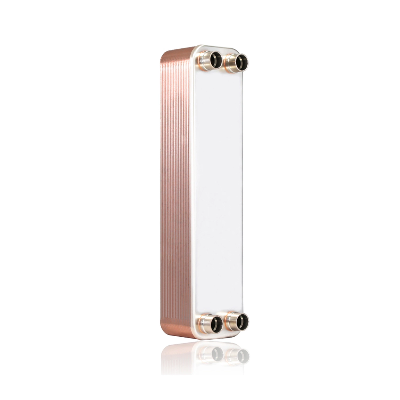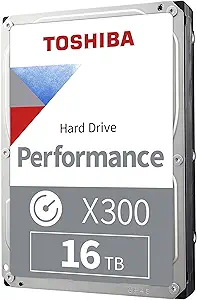Working Schematic DiagramMain ApplicationHeat Pump unitBoiler /
SteamChillersRefrigerationWaste Heat recoveryHeating and cooling of
high-purity water in areas like medical care, food, electronics and
etc.Cooling and heating of oilsCooling and heating of oilsOther
industrial applicationsProduct ParametersAdvantages of
products1.The size is compact and it is easy to install.2. It is
weight and it only accounts for 20%-30% of the shell and tube heat
exchanger.3.It is durable, and can withstand high temperature and
high pressure.4.It is not easy to deposit dirt, and high turbulence
reduces the dirt coefficient, thereby reducing the number of
cleaning times.5.High heat transfer efficiency and less water
consumption.Installation RecommendationsThe heat exchanger must be
supported by special brackets other than the connection spigots to
ensure its fixation and they must not be subject to stress or
vibrations from the connected pip ework. It is advisable to place
it on a platform and clamped to a solid structure using brackets
shown in the picture. Connection of hydraulic hoses direct to the
heat exchanger is not recommended due to pressure surges.The heat
exchanger must be mounted with vertical orientation as shown so
that proper fluid drainage can take place. Even the least amount of
air inside the exchanger would lead to a remarkable reduction
of heat transfer effect.Operating Recommendations 1.Freeze-up
protectionAny heat exchanger could freeze up when the temperature
is belowzero.Freezing up inside the heat exchanger will definitely
result in structural damage and leaking. If leaking happens in the
evaporator,even the compressor could be destroyed.Snch grave
consequence should be paid special attention to.The freeze-up risk
is divided into two basic areasExternal freezingIf evaporator or
condenser is placed outdoor,the heat exchanger could freeze up in
winters.To protect it from low temperature, it is imperative to
install a drainage.Discharge the water when the exchanger is left
unused and keep heating the water when in use. Adding glycol in the
water is also an efficacious method.Internal freezingThis only
happens in the water side of evaporators.The freezing cause is the
refrigerant's temperature being below zero owing to low evaporating
temperature or suction pressure,low evaporator water entering
temperature,fouled evaporators causing low water flow rates, and
loss of refrigerant charge. Analyse by cases to solve the
problems. Methods of evaporator freeze-up protection:a. ALP
control switch should be fitted to prevent operation at low suction
pressure conditions.b. A temperature sensor fitted behind the valve
can be used to stop the compressor when the valve temperature is
below a certain level.Temperature sensors can also be used to stop
the compressor when the leaving water temperature approaches
freezing. They must be as re-sponsive as possible and fitted
directly in the water flow as close as possible to the water
outlet. Fitting on the pipe wall is not advisable for possible slow
response leading to cease of effect in sensors.c. It is recommended
to turn on the cooling water flow in advance and start the
compressor with an appropriate delay. A reliable flow switch to
detect low water flow rates should be fitted so that it could give
out warning or stop the compressor at a low water flow rate.d.
Additionally, pay attention and avoid control sensor failure
.2.Scale treatmentIn daily use,scale accumulates at the water side
of heat exchangers therefore regular scale treatment is a must.
Variations in water quality from place to place and variations in
applications of plate heat exchangers make it difficult to define
in simple terms the water quality requirements for minimum
maintenance. It is important to ensure the right water quality and
reduce scale by establishing the requirements for local conditions
or utiliing specialist water treatment companies. The
following should be paid attention to in daily
maintenance.Undissolved solids(turbid water)If undissolved solids
like sand,weeds, leaves and other fibres are in the water, the
channels are easily blocked. Fibrous litters can not pass theheat
exchanger and must be disposed of. To reduce undissolved solids
blocking the unit, granules should kept smaller than 0.8mm and is
recommended to fit a 40-70 mesh strainer. Regular maintenance
ofthis unit is required howeverto ensure continued
performance.Dissolved productsUnder certain circumstance
crystallized deposits of calcium and magnesium ion in the water
will attach to the heat exchanger surface and scale the higher the
concentration of Ca2+and Mg2* and the water temperature, the
greater possiblity of scale formation.Thick scale will not
only gravely affect heat transfer capability but even block the
channels.As a result,to overcome nuisance tripping at start up
never use this kind of water directly and always carry out water
treatment beforehand.CleaningDue to the diverse applications of
brazed plate heat
Related products about Water-Cooled Air-Cooled Chillers Application Manufacturer of Brazed Plate Heat Exchanger
-
 Waste Tyre Plastic Recycling Machinery Machine Tire Crusher Production Line Rubber Crumb Grinding Machine Equipment Tire Shredder
Waste Tyre Plastic Recycling Machinery Machine Tire Crusher Production Line Rubber Crumb Grinding Machine Equipment Tire Shredder
-
 Stretch Plastic Blowing Pet Bottle Making Blow Molding Machine Bottles Stretch Automatic Pet Bottle Blowing Machine
Stretch Plastic Blowing Pet Bottle Making Blow Molding Machine Bottles Stretch Automatic Pet Bottle Blowing Machine
-
 Waste Plastic Pet Bottle, Water Bottle Flake, PP/HDPE/LDPE PE Film Jumbo Woven Bags Plastic Crusher Machine, Plastic Crushing Washing Recycling Machine
Waste Plastic Pet Bottle, Water Bottle Flake, PP/HDPE/LDPE PE Film Jumbo Woven Bags Plastic Crusher Machine, Plastic Crushing Washing Recycling Machine
-
 Type 2 Wall-Mounted Electric Car Charging Station 7kw /11 Kwelectric Vehicle Charging Station Home Wallbox AC EV Charger Single Phase or 3three Phase
Type 2 Wall-Mounted Electric Car Charging Station 7kw /11 Kwelectric Vehicle Charging Station Home Wallbox AC EV Charger Single Phase or 3three Phase
-
 G-View G12W Wholesale Auto Car LED Headlight Bulb High Power H13 H11 9005 H7 H4 Car LED Headlights LED Car Lights
G-View G12W Wholesale Auto Car LED Headlight Bulb High Power H13 H11 9005 H7 H4 Car LED Headlights LED Car Lights
-
 New Design Porcelain Round Plates Dinner Set for Wedding and Banquet
New Design Porcelain Round Plates Dinner Set for Wedding and Banquet
-
 China 2023 New Design Super Soft 100% Polyester Microfiber Knitted Oversized Decoration Hoodie Blanket
China 2023 New Design Super Soft 100% Polyester Microfiber Knitted Oversized Decoration Hoodie Blanket
-
 Handmade Art Creative Materials Thickened White Paper Cup DIY Disposable Handmade Colored Paper Cup
Handmade Art Creative Materials Thickened White Paper Cup DIY Disposable Handmade Colored Paper Cup






